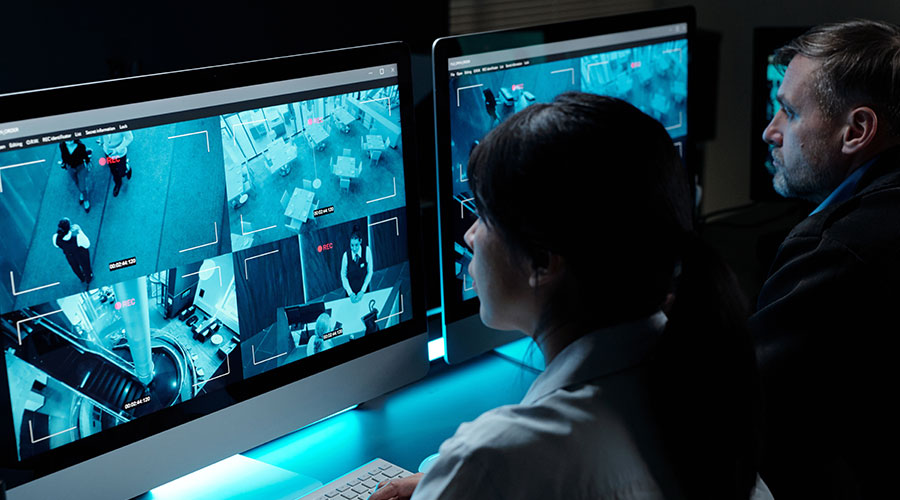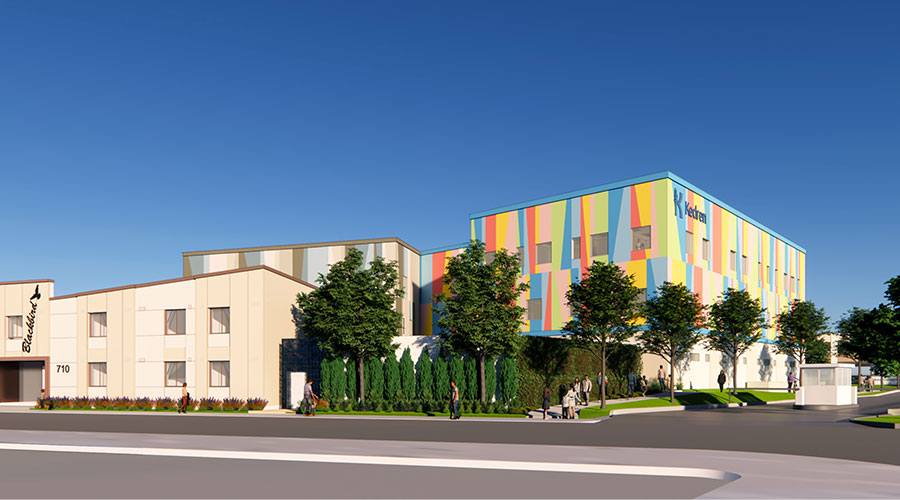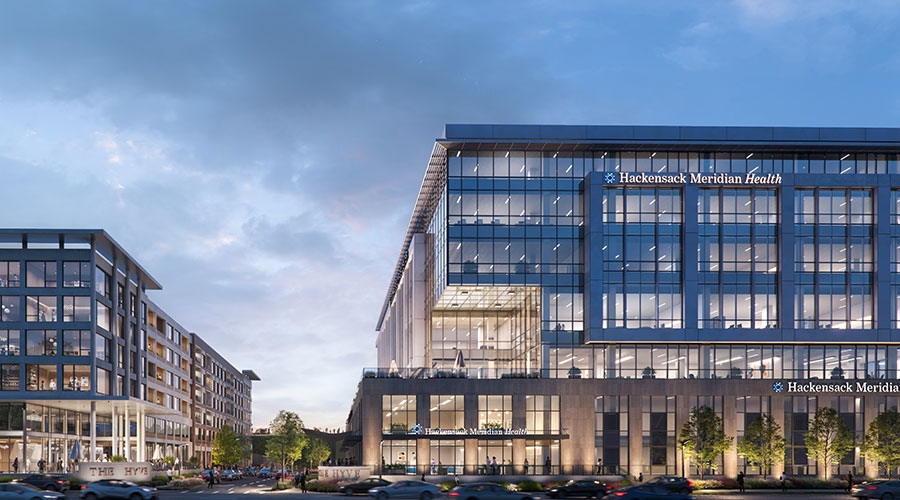Most use cases of IoT (Internet of Things) in healthcare fall into clinical applications (from traditional thinking)– from medical devices to procedures to records. But there is more to digital technologies’ application within healthcare facilities, clinics and hospitals.
The unique physical infrastructure of healthcare facilities, from critical care units to a waiting room, has led most medical enterprises to embrace various capabilities of IoT technologies. These use cases run the gamut from improving patient experience and comfort, to lowering utility costs, to fostering security measures for guests and in-patient visitors, to implementing preventative facility operations and maintenance.
Leading the way with a state-of-the-art digital infrastructure is the VA Hospital system and its 1.2 million-square-foot Orlando VA Medical Center at Lake Nona. Designated by the U.S. Department of Veterans Affairs as an “Emerging Center of Innovation” it is home to the first VA hospital to be built in the U.S. since 1995. Florida’s 1.8 million veteran population necessitated a facility for quality health care and services for local veterans and their families. The Center includes a large multi-specialty outpatient clinic, a 134-inpatient bed facility, a 120-bed community living center, a 60-bed domiciliary, and administrative and support services.
The Center also operates seven hospitals across the southeast region, providing acute care, complex specialty care and advanced diagnostic services. The Lake Nona campus is home to the Simulation Learning, Education and Research Network (SimLEARN) for simulation in health care training. Serving the largest integrated health care system in the world, VHA's SimLEARN provides ever-growing curricula and best practices to improve health care for the nation's veterans. Using a perfect replica of the hospital facilities, clinical staff train how to use innovative technologies in a safe learning environment to enhance diagnostic, procedural and communication skills to support quality care and the best outcomes.
With different technologies, comes a complex web of digital systems that on one hand enables the intelligent facility and offers massive potential for future integrations to aid in patient care; but also poses complex challenges for operations and maintenance.
“Our digital infrastructure at this point has multiple siloed trades–what we are working to achieve is a horizontal network, one pane of glass dashboard to centrally monitor our entire Center,” says Greg Merrill, who is responsible for all IT project management and coordination at the Orlando VA Medical Center. A Navy electrician with State Master Electrician License, Merrill was previously a process analyst at Lucent Technologies, and since 2012 has been with the VA as a program analyst.
With siloed trades controlling systems network, power plant, HVAC, water system, and switch gear–the network management poses major challenges. While older buildings are slowly being modernized, via efforts such as replacing electrical switch boards and adding automating breaker controls, generations of equipment are a challenge to consolidate in a building as young as the Center. Simply put, building technology is rapidly evolving at a rate that outpaces the master control environments. Particularly in buildings with such a wide range of deployed technology.
From a systems perspective exclusive to health care, there are a set of standards such as HVAC, boilers, power distribution, lighting, security, elevators, etc. However, several other systems run in tandem with these systems such as PA, tube systems, water treatment, chlorination, and others. Each of these runs their own software and management applications, and this doesn’t even include emerging technology solutions such as indoor navigation, public wi-fi, and asset tracking.
With the Orlando VA Medical Center, although a JCI solution is used for central management of boilers, chilled water, steam and HVAC controls, a separate SCADA system manages the Schneider substations and energy plant down to the individual breaker and meters for a joint commission reporting. Though workable, this leaves a huge array of other infrastructure out there running their own software, making a consolidated view for management and maintenance a true challenge.
Merrill sees a future where a centralized monitoring dashboard will provide actionable analytics for “a better use of tax-payers’ dollars.” Predictive maintenance, critical trending of equipment and proactive maintenance can help save millions of dollars. A simple example of where a more consolidated approach can impact the bottom line is the maintenance of expensive re-agents (substances added to systems to cause a chemical reaction or added to test if a reaction occurs).
These are stored in a clinical laboratory. To maintain these reagents, worth half a million dollars, compressors must be monitored closely, and staff must be alerted immediately if anything is out of tolerance. Using IoT subsystem access point technology like Mist, Merrill monitors various points to allow for this rapid response. Mist is an AI-driven platform for wired and wireless networking. It uses a combination of data science, machine learning and other AI techniques to deliver reliable Wi-Fi access, as well as indoor location services using virtual Bluetooth LE™ and intelligent connectivity for IoT devices. Merrill sees this as an example of empowerment through data - mixing control monitoring with orphaned monitoring technologies, now being brought into a master platform to enable synergies of efficiency. The Mist platform is an exceptional example of an IoT bridging solution allowing, through wired IoT ports, the ability to aggregate data from legacy analog devices, into larger data lakes for use.
Beyond just individual devices though, the ability to wrap up entire third-party systems into a centralized dashboard and monitoring systems allows both reporting and alarming to be further refined over time. It also allows for an easier management practice for all building staff instead of having knowledge silos about specific software for each subsystem.
Optimizing stress free experience
Beyond efficiencies, these synergy opportunities between systems offer a growing number of conveniences and increased safety to patients, visitors and staff alike. One such example is secured patient safety via location monitoring. Recently, the Center’s exterior doors were connected through the Mist infrastructure to enable Bluetooth Low Energy (BLE) location monitoring. Patients with a BLE ID bracelet can be monitored if they wander away from clinical service zones through doors.
The monitoring accuracy of BLE wayfinding via Mist is within about 2-meters (depending on the tags). Additionally, the BLE asset tracking allows for locating wheelchairs, helping facility staff navigate through the facility, or sending patients cellphone notifications through virtual beacon zones, alerting them to clinical messages such as flu-shot season. All this is enabled by the native Mist Virtual BLE technology for real-time indoor location services provided as part of the Mist public Wi-Fi infrastructure.
Merrill plans to integrate IoT’s full potential to achieve, among other goals, shorter clinic wait times, asset location, increased monitoring of automated doors, and providing admissions offices with data on room availability. He is also looking to leverage real-time navigation features for parking guidance so veterans arriving for appointments can be alerted to parking spots without having to wait or drive around.
This growing interconnectivity of building and patient empowers both patients and staff. Ironically, it is the result of using an infrastructure that is already in place but harnessing the data in different and more creative ways.
“Having a holistic view of our entire multi-site systems is our mission for monitoring. We are hoping to gradually connect into a horizontal monitoring approach as our next step, instead of this vertical system silo model that buildings have traditionally been built around,” says Merrill.
Traditional systems and platforms were built around reporting, and management of a single trade at hand, which Merrill explains is still vital as the VA requires compliance with Industrial Controls Standards (ICS), NIST and VA standards. However, by intelligently using the data from systems, the data becomes actionable analytics often outside of just the trade that generated the data.
The Cloud Enters the Picture
Currently, all data storage systems are required to be on-premise for facility management. This is a VA standard at the moment. Should standards change, however, as they have both in the commercial space, and in parts of the federal government, Merrill may consider moving to the cloud. Cloud solutions become more manageable, scalable and affordable compared to their on-prem predecessors. “Shifting our on-premise infrastructure in the name of upgrades isn’t the best use of tax dollars,” Merrill underscores. Security and policy remain the biggest challenges to any shift, however.
With the critical infrastructure using separate software packages for various systems each with their own back-end requirements and dedicated operational understanding, the need for one platform is more critical than ever. The lack of interconnections into a single pane of glass for monitoring remains a challenge but that unified view is the target.
“Our ultimate goal is to increase convenience for our visitors through a patient engagement network and make the healthcare facility and the hospital a better place to be if you have to be there,” Merrill explains.
“Ultimately, we want Veterans to start their experience with stress free services–from finding a parking space to knowing exactly what their wait time will be once they arrive at their destination,” Merrill says. “If we can help alleviate some stress through IoT technology usage, then we succeed.”
Michael C. Skurla is the Chief Technology Officer for BitBox USA, providers of the BitBox IoT platform for multi-site, distributed facilities’ operational intelligence, based in Nashville, Tennessee. Mike’s in-depth industry knowledge in control automation and IoT product design sets cutting-edge product strategy for the company’s award-winning IoT platform.

 AI-Driven Facilities: Strategic Planning and Cost Management
AI-Driven Facilities: Strategic Planning and Cost Management  Double Homicide Suspect Hides from Police in Upstate Community Hospital
Double Homicide Suspect Hides from Police in Upstate Community Hospital McCarthy and HOK Break Ground on Kedren Children's Village
McCarthy and HOK Break Ground on Kedren Children's Village Thousands of Healthcare Workers Laid Off
Thousands of Healthcare Workers Laid Off Construction Tops Off at Hackensack Meridian Health and Wellness Center
Construction Tops Off at Hackensack Meridian Health and Wellness Center